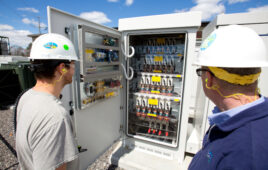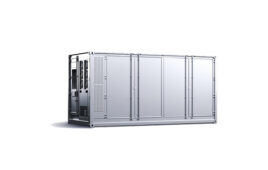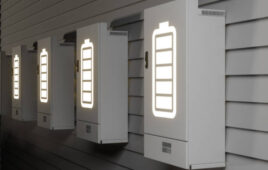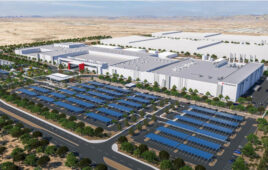Zinc-ion battery maker Salient Energy announced that it has completed thermal runaway testing and is one step closer to getting UL listing for its stationary energy storage system.
UL 9540A tests battery safety by first determining whether the energy storage system uses batteries that introduce a risk of fire or explosion. If so, the test then determines whether safety features integrated into the pack and system sufficiently mitigate these risks. As confirmed by the UL 9540A results, Salient’s water-based battery is fundamentally incapable of causing the catastrophic failures that can occur in lithium-ion based systems. Since zinc-ion batteries are the only non-lithium batteries that can match lithium-ion performance with the same compact design, Salient’s technology represents the only drop-in replacement that can remove safety risks in existing energy storage designs.
“Solving climate change requires wide-scale deployment of energy storage this decade, but this won’t be possible if energy systems keep erupting in flames and emitting toxic gases,” said Ryan Brown, CEO of Salient Energy. “The industry urgently needs to switch to safe batteries to maintain the public’s enthusiasm for installing batteries in their homes and neighborhoods.”
Zinc-ion batteries are made primarily from zinc and manganese, which are both produced in abundance in North America.
News item from Salient Energy





As the biggest market share for batteies will be stationary batteries for large scale load diversion and balancing. The home backup market isn’t out of reach either as it is the batteries can be stacked against a wall as easily as being hung on a wall. Weight isn’t an issue for things that don’t have to move. There is nothing wrong with nickel chemistry except the price of nickel which is approximately 10 times that of zinc.
The pros and cons of battery chemistry. Although this zinc ion chemistry is 1.3VDC, it has fairly good AH ratings, but takes a lot more cells to make a ‘larger’ battery such as one used in home grid agnostic systems. A 70kWh zinc-ion battery would be around two tons and take up around 700 liters of volume around 25 cubic feet of cabinet space. There are other equally large low voltage battery chemistries like company EnerVenue and their hydrogen-nickel battery that can well last 50 years in service with (no) maintenance required. EnerVenue is saying their product using mass manufacture can be done for $50kWh, we’ll see in a couple of years.